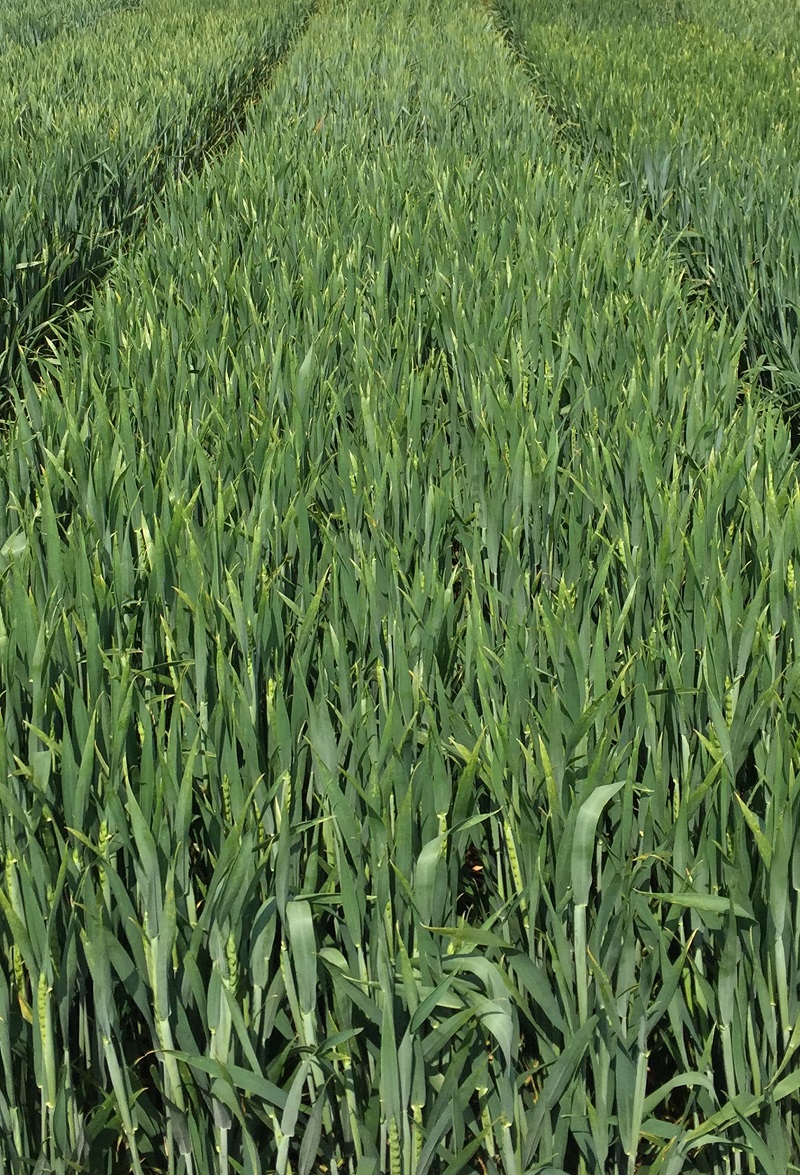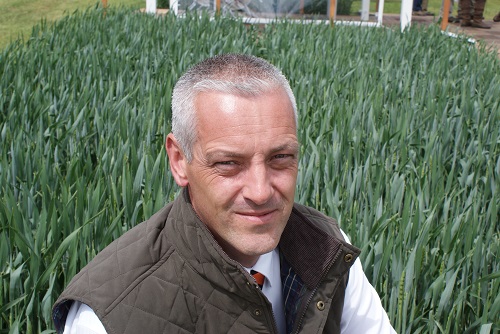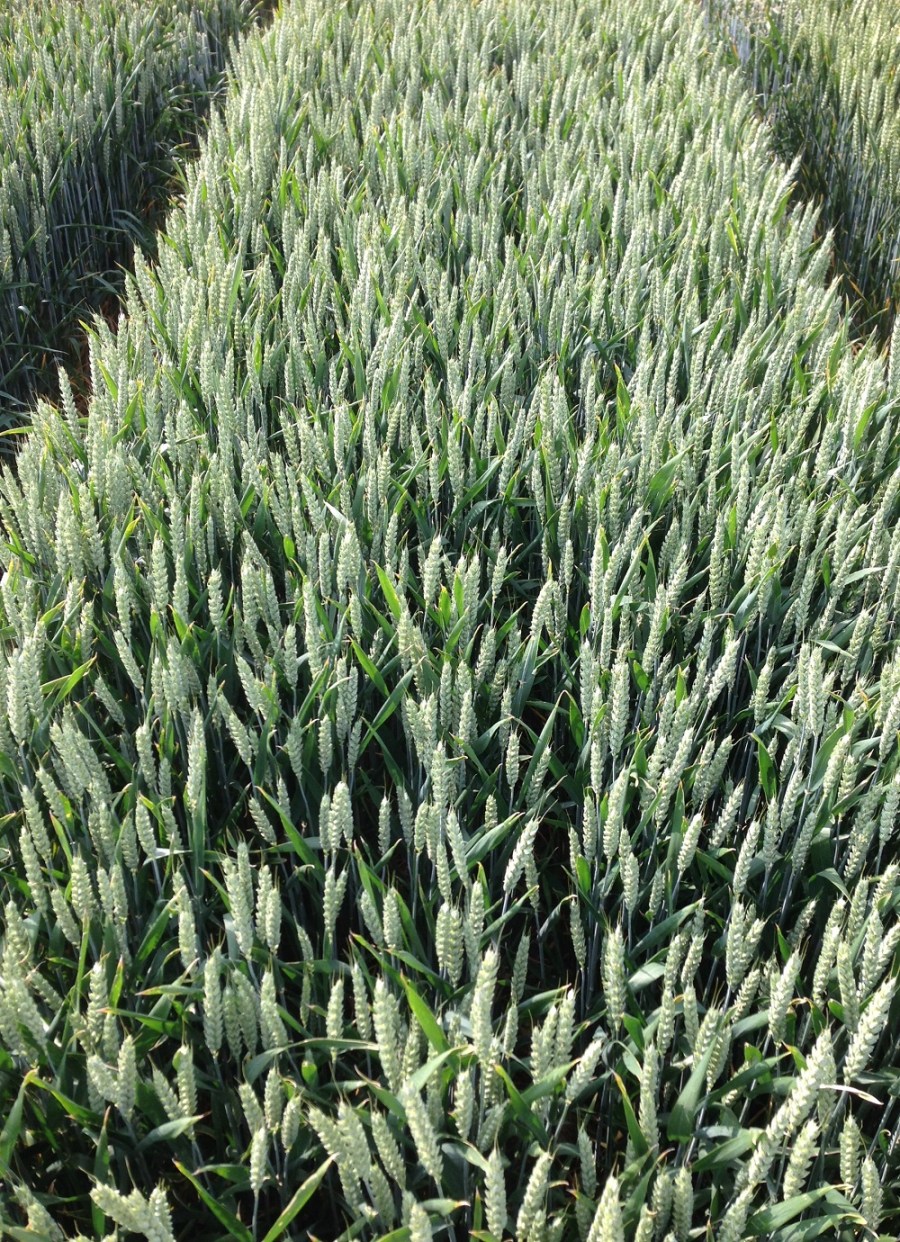In a market of already very strong Group 4 competitors, there looks to be a new contender on the horizon. CPM reviews RAGT’s new variety, RGT Gravity.
Judging on face value, it doesn’t get much better than this.
By Charlotte Cunningham
Oakley, KWS Santiago and Scout have been firm favourites among feed wheat growers over the years. Now they’ve spawned a new son, which has the potential to top the yield table once again. Meet RGT Gravity, RAGT’s new high-yielding candidate, which has impressed throughout its early years of trials.
According to RAGT’s Steve Brown – the man who’s been at the helm of RGT Gravity seed production for the past two years – yield and cleanliness are the two keynote features of this new candidate. “It stood out above other varieties in National List trials. From the NL1 and NL2 results, it’s clear RGT Gravity is a potential star,” he says.

RGT Gravity is the result of a three-way cross, drawing traits from Scout, Oakley and Santiago.
Disease resistance
The variety itself is a hard feed wheat with good lodging and reasonable disease resistance. It’s showing good yellow rust resistance, which is encouraging after the breakdown of other varieties such as Zulu and JB Diego, says Agrii’s Barry Barker. “It also has orange wheat blossom midge resistance – a trait that one or two other recent varieties haven’t benefited from.”
AHDB’s Simon Oxley says the variety, which is coming up for recommendation this year, has positive characteristics. “Everything is going in the right direction; I look forward to seeing more data this coming season.”
When breeding RGT Gravity, RAGT was aiming to create something that challenged KWS Santiago. “Santiago has been rated as a star variety,” says Steve Brown. “We’ve been aiming to create a variety that beats that – Gravity has done this in terms of yield; it’s a step up agronomically.”
The variety is the result of a three-way cross, drawing traits from Scout, Oakley and Santiago. Célia Bequain, wheat breeder at RAGT, says she chose Scout for its grain quality and Oakley and Santiago for their high yielding genetic potential. “RGT Gravity stands out for its exceptional and consistent yield; it’s very exciting.”
As a result of its parentage, the variety has inherited orange wheat blossom midge resistance and captured Santiago’s high tillering ability and consistency in performance, she explains. In addition, pre-listing figures show ratings of 6 for mildew, 8 for yellow rust, 6 for brown rust, 5.4 for Septoria tritici and 4.4 for eyespot. “Although it has Santiago in its breeding, the yellow rust weakness doesn’t come through, which is encouraging,” says Openfield’s Lee Bennett.

Yield is the key to winning the race, notes Lee Bennett, and Gravity’s’s already won that.
Of course, the early stages of the trials leave room for undiscovered weaknesses, especially the robustness of its yellow rust resistance, he adds. “However, judging on face value, it doesn’t get much better than this.”
Although the disease ratings aren’t yet set in stone as further trials are to be done, Gravity’s septoria resistance is little more than average, if you compare it with wheats on the current AHDB Cereals and Oilseeds Recommended List. That said, it’s likely to be a step-up from Santiago’s current score of 4.3, suggesting any farmers used to growing the variety will be aware of the extra management requirements associated with a lower septoria rating.
Testing has been rigorous for fresh-faced RGT Gravity and its consistency seems to be a real selling point. NL1 testing saw 94 plots entered and NL2 saw 55 plots; however, in both trials RGT Gravity came out on top, says Simon Howell at RAGT. “Right from the first year it just stood out. Santiago has always had a huge biomass and RGT Gravity looks very much the same.”
Having had the standard RAGT fungicide programme applied, last year’s 3ha trial crop flagged up no major areas of concern. “RGT Gravity is sturdy with no lodging issues and after having 240kgN/ha applied last year it stood up well,” says Steve Brown.
“It looks robust enough to take the higher levels that hard feed wheat growers use to maximise yields,” he adds. RGT Gravity also proved to be a clean crop with no major disease issues as well as good in-the-field performance, with low screening levels and no shrivelling or sprouting evident.
Current National List data shows yield values of 107.3% for treated plots and 84% for untreated, compared with the controls. In comparison with RL’s 2017/18 figures for Santiago of 103% (treated) and 69% (untreated), the progression in RGT Gravity is clear. “Yield is the key to winning the race and it’s already won that. Growers need to secure it while they can,” says Lee Bennett.

Chris Guest reckons the variety combines yield with good grain quality, weed suppression, OWBM resistance and a solid disease resistance.
But, it’s not just all about yield with RGT Gravity. Gleadell’s Chris Guest is particularly excited about the upcoming variety. “Yield is really important but RGT Gravity combines this with good grain quality. There’s also weed suppression, OWBM resistance and it’s solid against disease,” he says.
Consistency confirmed
Data from both official testing and trials on RAGT’s own sites reinforce the consistency of RGT Gravity. “The NL1 and NL2 trials encompassed varied growing conditions and RGT Gravity was the top performer in both years,” says Célia Bequain. “The past two years of official trials have confirmed what’s been seen on our land over the past five years.”
Though it’s hard to get a good feel for the variety at such an early stage, Lee Bennett says it’s all about the yield. “Nothing’s touching it in the trials,” he explains.
Barry Barker at Agrii has similarly high hopes. “What we’ve seen so far is that it has good yield potential and robust disease resistance.” Yield is often one of the biggest drivers in seed choice, and this is a trait in which RGT Gravity is proving to excel: Another year of a similar yield will be positive, he adds.
As far as grain quality goes, current data gives values of 12.5% protein content, with a Hagberg Falling Number of 200. In recent years, some high yielding varieties have been coupled with lower specific weights, but RGT Gravity is currently proving to be acceptable, with trials so far indicating a specific weight of 76.1kg/hl. However, this is provisional data, so there’s a risk that final values will come out below average, in comparison with other varieties.
In the field, RGT Gravity is measuring up as average in terms of height (85cm), has good straw strength with lodging figures of 4% (treated) and 1% (untreated) and has a maturity rating of +1. Trials so far have proven its strong agronomic merit, both in the treated and untreated plots, with success in untreated trials highlighting its good natural resistance. “It’s solid all round,” says Chris Guest.
Out-and-out-yield
So, which growers will like RGT Gravity? Typically, farmers who are after out-and-out yield as well as good grain characteristics, says Chris Guest. “RGT Gravity is suited to people who like consistency. JB Diego has been the fall-back variety and RGT Gravity has the potential to follow on from this; it’s the answer to a lot of grower requirements.”
Due to its parentage, RGT Gravity would be the logical next step for long-term growers of Santiago. However, it’s also suited to any hard feed wheat grower looking for high yields matched with good grain quality, providing a dual-purpose variety that covers all areas. Lee Bennett notes there are others on the current RL that are branded as being hampered by yellow rust.
At Wynnstay, JB Diego has been the biggest selling variety in the past three years due to its consistent performance and reliable grain quality, says the firm’s Richard Torr. But with growers looking to make the next step up, RGT Gravity looks set to be a very useful replacement.
“In terms of a replacement for Diego, the obvious way to go is with a hard feed wheat that has similar qualities but higher yield and RGT Gravity tops the bunch for yield,” he adds. “We’ve liked the look of the variety for some time. While one or two other similar varieties have moderate straw strength, RGT Gravity has good, solid straw.”
As far as regional differences go, from the six full-scale trial Agrii sites in Scotland, Yorks, Kent, Essex, South Wales and the South West, RGT Gravity performed consistently across the board, says Barry Barker. “So far, so good: there’s nothing obvious to make it look like there’s a regional preference,” he explains. “It didn’t perform as well in South Wales. But this region has high septoria pressure, so we’re used to seeing lower results – the rating was average for RGT Gravity here.”
This lower performance in high septoria areas may limit its use in western counties, where farmers are looking for a score of 6 for the disease. However, Barry Barker says plenty of other varieties have similar ratings and if a farmer isn’t growing a lot of the variety in high risk areas, there shouldn’t be an issue with management. “Growers just need to be aware of the issue. I wouldn’t suggest growing any more than 25% of the variety in high risk areas.”
Eyespot resistance also seems low at 4, though with limited data available, Barry Barker says not to take too much notice of these values at this stage. Even so, RGT Gravity, like Diego, doesn’t carry the Pch1 resistance gene for eyespot, so this is an area that’ll need management by growers, explains Célia Bequain.
A small amount of seed is available this autumn after national listing and, having attended past RAGT open days, Chris Guest has seen a remarkable number of people show interest in the variety. “There’s no doubt it’ll sell out,” he says. “RGT Gravity is great for growers who are looking to chase yields to maximise their gross margins and gross outputs.”
Simon Howell credits this early availability of seed to the sheer volume of interest the variety has drawn. “We’ve had five businesses wanting to be involved with RGT Gravity, which is why it’s being pre-released.” The feedback from agronomists and farmers has been very positive and the third year of testing is looking to be exciting, he adds.
Green light for the grey list?
RGT Gravity is still in the candidate stage, and won’t be considered for inclusion on the Recommended List until this autumn at the earliest. However, Northants seed producer Andrew Pitts says there are many benefits of growing a ‘grey-list’ variety.
“As a seed producer, we’re always looking for the next new variety. It’s always done on trust between the grower and seed house and a greater premium is paid as there’s the risk of the grain not getting moved at harvest time,” he explains.
Grey-list growers have direct contact with the breeder who advises them on any strengths and weaknesses the variety may have, as well as advising on ripening, straw strength and standing ability. From this, growers can tailor their management plans. Breeding, especially parentage, is very important, adds Andrew Pitts.
“There are lots of promising new varieties. By having them before they’re listed we’re learning to grow them before they reach the main market. You never know if you’re growing the next top variety. We had Skyfall two years before it even made it onto the RL.”
One of the main drawbacks of growing a pre-listed variety is if cash flow has been planned around Oct and Nov for normal post-harvest movement, as this doesn’t always happen. However, the compensation from the seed house covers this, he adds.
As a specialist seed grower, Andrew Pitts has grown a multitude of varieties, some that don’t even have names. When deciding whether to grow a potentially upcoming variety, he’s looking for good standing power to achieve maximum returns when harvesting, positive disease resistance, and something a commercial farmer would want to grow.
Applying these principles to RGT Gravity, it seems to tick all the boxes so far. “Overall, there’s a lot to like about it,” says Barry Barker. “Is this the new top yielding winter wheat variety for 2018?”
RGT Gravity at a glance





